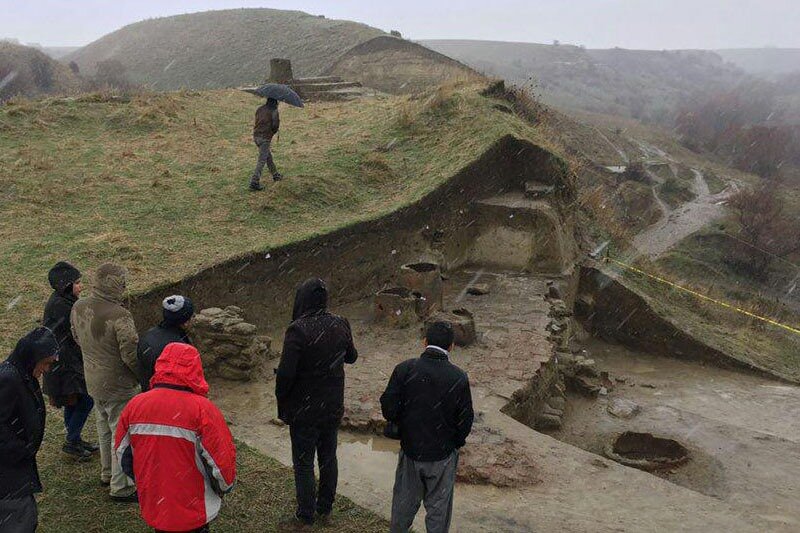Archaeological survey resumed at ancient hill with Bronze Age relics northwest Iran

TEHRAN – The second archaeological survey has recently commenced at Tappeh Gerdi-Gouran months after the ancient mount situated in Iran’s northwestern Piranshahr county yielded relics and vestiges from the Bronze Age.
“The second season of an archeological survey has started at Tappeh Gerdi-Gouran of Piranshahr, which is situated in West Azarbaijan province, with the aim of completing the information of the [ancient] layers and architectural ruins [partly] obtained during the first chapter,” ILNA quoted Azita Mirzaei, who leads the survey, as saying on Monday.
Stratigraphic excavations conducted in the first chapter revealed layers, deposits, and pottery fragments connected with the late Islamic periods, the Parthian era …. and the Bronze Age, the archaeologist said.
Last month, a number of graves and human skeletons were discovered near Piranshahr in a survey led by archaeologist Afrasyab Geravand. The oldest remains discovered in the area show that the region was inhabited in prehistoric times, and the history of human h presence in the region dates back to about 30,000 years ago.
West Azarbaijan embraces various lush natural sceneries, cultural heritage sites, and museums, including the UNESCO sites of Takht-e Soleyman and Qareh Klise (St. Thaddeus Monastery), Teppe Hasanlu, and the ruined Bastam Citadel.
The region has been the seat of several ancient civilizations. It formed part of Urartu and later of Media. In the 4th century BC, it was conquered by Alexander the Great and was named Atropatene after one of Alexander’s generals, Atropates, who established a small kingdom there.
The area returned to the Persian (Iranian) rule under the Sasanians in the 3rd century CE. The Arabs controlled Azerbaijan from the 7th century until Turkish nomads overran it in the 11th century. Thenceforth the inhabitants of the region were Turkish speakers.
The Mongols overran the region in the 13th century, and, under the ruler Hulegu, Azarbaijan became the center of a Mongol empire extending from Syria on the west to the Oxus River (now the Amu Darya) on the east.
AFM/MG
Comments